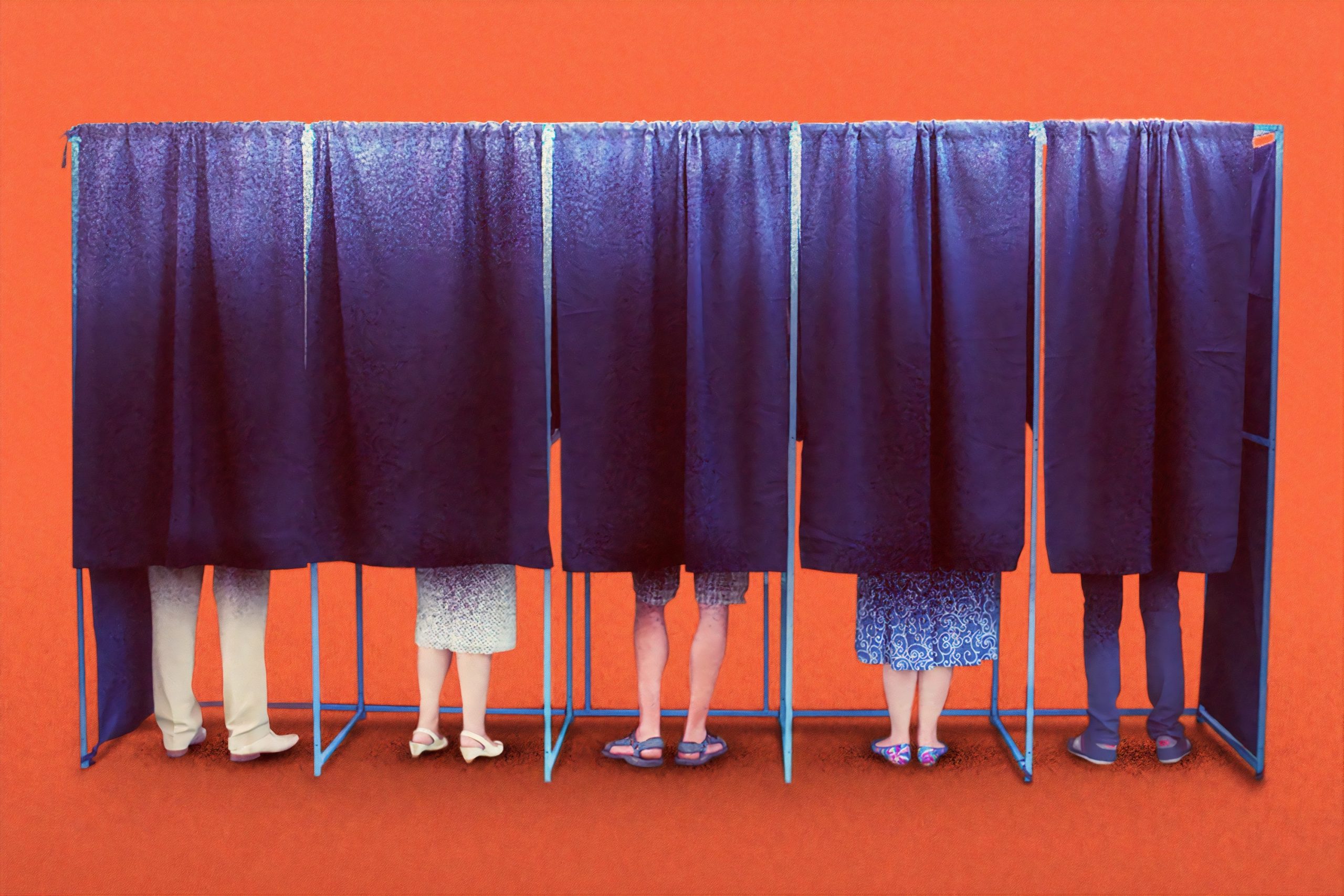Everyone is talking about it. Whether it’s in a Black Lives Matter post on how to support the movement, talking about new legislation in Congress, President Trump’s actions or the impact of COVID-19, voting is a hot topic.
With this buzzword circulating around, the pressing need to vote is being felt by those who’ve been voting for years and by new voters alike. If you’re a new voter, here is the basic information to help guide you through the process. If you’re on the fence because of a fear of the unknown, don’t let the process scare you. It is easier than you may think.
Registration
Once you turn 18, you automatically meet one requirement to be eligible to vote. However, you can’t just walk in and vote on Election Day; a new voter needs to register. You can do this online, through a college drive or in a physical building (election offices, Department of Motor Vehicles, etc.).
There are some basic requirements you need to fulfill to become a new voter. You must be:
— A U.S. citizen
— A resident of the state you’re registering in (you register to be a voter in a specific state)
— 18 years old on Election Day
— Not a convicted felon (If you’ve been convicted of a felony, you can sometimes get your right to vote restored.)
— Not judged “mentally incompetent” by a court of law
— Not registered to vote in other states
If you meet the above requirements, you can move on to filling out the registration. It takes little time and is very easy to complete.
— Fill out the section about your state of residence. You will be asked to fill out personal information (Social Security number, residential address, etc.).
— Fill out the section about your party affiliation. There is Democrat, Republican, Independent, Green, etc. If you don’t associate with any party, you can choose “Other.”
— Your part is done. It’s now in the government’s hands to approve your registration. You will be notified when you have been officially registered. Important: Being officially registered is a process, so don’t wait until Election Day to register.
Voting
Congratulations on making it through the registration process. The interim between getting registered and voting on Election Day is a great time to educate yourself on candidates and their policies. Your vote is a statement of what you believe and pushes your chosen candidate one step closer to holding office, so it’s important to make sure you actually stand behind them.
So, now you’re registered and informed, but you have no clue how to actually vote. That’s okay, you’re not alone. There are three main methods of voting: absentee voting, mail-in voting and in-person voting.
Absentee Voting
Absentee voting is when you fill out your ballot at home (not in person at a polling center) and send it in to be counted. Voters have many reasons to request absentee ballots. It can be because of a pandemic, like our current situation, job constraints or not being in your voting district. So, for those going to college out of state, or even in state but far away from home, you can still vote with an absentee ballot.
How it works:
— You must request an absentee ballot. Some states will mail registered voters a guide on requesting absentee ballots. If you’re not sent one, you can go online to fill out a request or call your mayor’s office. Some states require a valid reason for an absentee ballot; others don’t. (Note that Tennessee requires new voters to vote in person for the first time unless they registered in person.)
— You will receive an absentee ballot in the mail after you’ve been approved. The ballot will come with instructions, which generally look like this:
— Fill out your ballot.
— Put it in the first envelope.
— Sign and seal the first envelope.
— Put that envelope into the provided prepaid return envelope.
— Sign and seal that envelope.
— Mail it out at the post office or put it in a designated ballot drop box. Important: It must be postmarked by Election Day for it to be counted.
Mail-In Voting
Most people think absentee voting and mail-in voting are the same. They aren’t too far off; mail-in voting is the more technical term for states that process all votes through the mail. Those states are Colorado, Hawaii, Oregon, Washington and Utah.
The mail-in ballot works the same as the absentee ballot. The difference is that you don’t have to request a mail-in ballot because it gets automatically sent to every registered voter in the aforementioned states. If you live in one of those states but don’t want to mail in your vote, you can opt to vote in person.
In-Person Voting
This is the method most people think of when they imagine voting. It involves walking into a physical building and waiting in line to cast your vote in a little booth. It can be intimidating for someone who has never experienced it before. Even if you were taken as a kid when your parents voted, it can still be scary to go in alone for the first time. Truthfully, it’s not that bad.
How it works:
- Go to your polling station during the polling hours.
- Your polling station is based on your residence address.
- It can be found on your voter registration card.
- It can be found by calling your local county election polling center.
- Your polling station is based on your residence address.
- It can be found online.
- The polling hours vary by polling station, but typically they are open for a 12-hour period.
- Hours can be found by contacting your local election office.
- They can be found online.
- You go through a check-in process, usually after waiting in line.
- Walk up to the poll worker to be checked in. This is to verify you are at the correct polling station, that you have not voted in this election already and that you are registered to vote. Important: Bring a photo ID; this is a typical requirement for first-time voters.
- Sign the polling book next to your name.
- You will be shown which booth to cast your vote in.
- Vote!
- Different states have different machines used for voting.
- Optical Scan: Mark your paper ballot with your preferred candidates, then the completed ballot is either scanned in on-site or you drop the ballot into the ballot box to be scanned later that day at a centralized location by election workers.
- Direct Electronic Recording (DRE): Mark your choices entirely on a touch screen (sometimes a poll worker will give you a card to insert into the device to start the voting session). Use the touch screen to pick your preferred candidates. Finish by tapping a button (the “finish” button varies based on the type of machine), and your vote is sent in and counted.
- Different states have different machines used for voting.
- Paper Ballot: You will receive a paper with the different choices of candidates printed on it to mark with a provided pencil in the private voting booth. Mark the paper ballot according to the instructions (most likely it will tell you to put an “X” next to the candidate’s name), and place it in the ballot box.
| Standard Voting Machines | ||
| Optical Scan | Direct Electronic Recording (DRE) | Paper Ballot |
| Alabama | Arizona | Idaho |
| Alaska | Arkansas | Iowa |
| Arizona | California | Kansas |
| Arkansas | Connecticut | Maine |
| California | Delaware | Massachusetts |
| Connecticut | Florida | Minnesota |
| Florida | Georgia | Mississippi |
| Idaho | Illinois | Montana |
| Illinois | Indiana | New Hampshire |
| Indiana | Kansas | North Carolina |
| Iowa | Kentucky | Pennsylvania |
| Kansas | Louisiana | South Dakota |
| Kentucky | Minnesota | Texas |
| Maine | Mississippi | Vermont |
| Massachusetts | Nebraska | West Virginia |
| Michigan | Nevada | Wisconsin |
| Minnesota | New Jersey | |
| Missouri | North Carolina | |
| Montana | North Dakota | |
| Nebraska | Ohio | |
| New Hampshire | Pennsylvania | |
| New Mexico | Rhode Island | |
| North Carolina | South Carolina | |
| North Dakota | Tennessee | |
| Ohio | Texas | |
| Oklahoma | West Virginia | |
| Pennsylvania | Wisconsin | |
| Rhode Island | Wyoming | |
| South Carolina (for absentee voting) | (D.C.) | |
| South Dakota | ||
| Tennessee | ||
| Texas | ||
| Vermont | ||
| Virginia | ||
| West Virginia | ||
| Wisconsin | ||
| Wyoming | ||
| (D.C.) | ||
| States with Less Common Voting Machines | |||||||
| Alaska | Arkansas | Connecticut | Maryland | Missouri | New York | Vermont | West Virginia |
| Touchscreen and Paper Ballots | iVotronic | Vote by Phone | Voter-verifiable Paper Voting System | Punchcards | Imagecast | Vote by Phone | AutoMARK |
| Hand Count | ES&S DS200 | ||||||
| ES&S AutoMARK | |||||||
| Shoup Lever Machine | |||||||
| AVM Lever Machine | |||||||
That’s it. You leave the polling booth having done your civic duty. You have voiced your opinion about who you want to be making the decisions that impact your life as well as the larger community. You have graduated from being a new voter and are ready for the next election.
Questions
Still feel uneasy about things? Don’t worry. Here are some frequently asked questions (and questions you didn’t know you wanted answered):
- Can I vote if I’m away at college?
- Yes, see the absentee ballot section.
- What do I need to bring?
- A photo ID. If you don’t have one, check your state’s requirements to see what alternative forms of ID are accepted, if any.
- What does the paper look like?
- Contact your state or local election official to see a sample ballot.
- Do I have to fill out every section of my ballot?
- No, you can fill out the ballot for as few offices as you’d like.
- What if I make a mistake on the paper ballot?
- You can ask for a new ballot.
- Is there a limit on how long I can take in the booth?
- No! Take as long as you need to make your choices. Don’t feel rushed, but obviously don’t stay past closing hours.
- Can you be turned away in line for in-person voting?
- If you meet the requirements to vote, you have the right to vote; they can’t legally turn you away.
- Do I have to tell people who I voted for?
- No, you don’t ever have to. You can keep it confidential.
- What about write-in candidates?
- Most states allow you to write in a custom candidate in a provided blank space. However, just writing in a candidate doesn’t mean that vote will count. The requirements for a write-in vote to count will vary by state.
- How can I vote early?
- You have to check if your state offers early voting.
- If it does, you don’t need an excuse to vote early.
- Check your state’s early voting time period and follow the steps for voting on Election Day.
- You have to check if your state offers early voting.
- What is provisional voting?
- It is when you vote on a provisional ballot, a regular ballot that is denoted as special, usually in an envelope, before being officially placed in the ballot box. When the votes are being counted, the provisional votes will be verified before being counted.
- How do I cast a provisional ballot?
- You can ask for instructions on how to ensure your provisional ballot is filled out correctly and will count. You can ask for a way to confirm that your vote was counted (typically a phone number will be given).
- When would I use a provisional ballot?
- If your name isn’t on the voter list at the polling station you show up to, you can request to have a provisional ballot.
- If you are denied a provisional ballot, you can call the Election Protection Hotline at 1-866-OUR-VOTE (866-687-8683).
- Do I have to register for a party?
- In primaries, it varies by state. In the general election, no.
- Can I vote outside of my party?
- Yes, in the general election, but it varies by state whether you can do so in the primary election.
- What is the difference between a primary election and a general election?
- Primaries
- Primaries are when you narrow down, within the parties, who the candidates will be for the general election, i.e., picking who will be the Democratic candidate and who will be the Republican candidate.
- There are different types of primaries based on the state you live in: Open primaries, closed primaries, semiclosed, semi-opened, top-two primaries, and open to unaffiliated voters.
- Some states require you to vote for the party you are affiliated with on your registration, while other states allow you to vote outside of your party affiliation.
- General elections
- After candidates have been narrowed down to one candidate per party, the general elections are when you vote on which of those candidates you wish to elect into office.
- In general elections you can vote for any party regardless of your affiliation and even if you are unaffiliated.
- You can vote in the general election even if you didn’t vote in the primary election.
- Primaries
- Still nervous to vote in person?
- You can ask a poll worker for extra assistance.
- State-specific questions?
- Need help finding out how to vote with your disability?
- Try this link.
Conclusion
There’s a reason why voting is being talked about so much right now: We are nearing the end of the primary election and approaching the general election for president in November. Voting is an important way to create change in the United States (or to maintain the status quo, if you choose). It is an opportunity for your voice to be heard either way.
If you are lucky enough to qualify to be a new voter — not everyone meets the requirements — please consider registering and casting your vote, no matter who you vote for. It’s not a scary process when you have all the information. There are many resources a new voter (or rusty voter) can use to help navigate the process if this guide wasn’t enough. Google it, ask people you know who have voted before or ask poll workers. Vote!
















